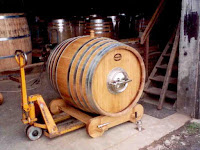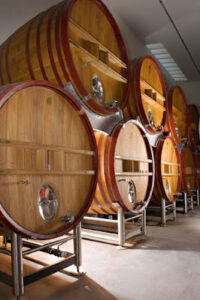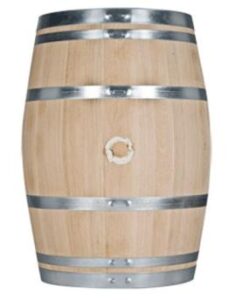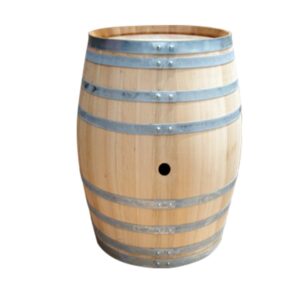There are many choices that a winemaker has to decide upon when converting grapes to wine. If you choose to read those technical sheets that wineries provide, you have these decisions. But do you know what they mean? More importantly, do you understand how they impact the wine in your glass? If you understand what the heck those wine terms mean, then maybe you can find more wines that fit your palate profile. Throughout this series, I will introduce different wine making terms and share how they effect the wine.
Options, options, options!
There are many options open to a winemaker when deciding what vessel to use. Every vessel imparts part of itself onto the finished product. So the decision is an important one. Winemakers can choose between stainless steel, concrete tanks, amphorae and oak.
Stainless steel offers a lot of positives to the winemaker. It may cost quite a bit on the front end to purchase variable tanks, but in the long run, they tend to be cheaper. They are easy to clean thanks to the smooth surfaces. The tanks can be used vintage after vintage and it is easy to maintain temperature during fermentation. In terms of their impact on the wine, it is pretty minimal. No tannins or flavors will be added to the wine.
Dracaena Wines has received consistent 90+ ratings and multiple Double Gold medals. Click image to order yours today and let Dracaena Wines Turn Your Moments into Great Memories!
Concrete tanks are becoming more popular – or I should say are making a comeback. The vessel will add mineral notes to the wine and have the benefit of naturally adding micro-oxygenation to the wine thanks to their porous nature. An added benefit is that temperature control is steady as the variation in temperature is minimal. The negative is that thanks to the porousness of concrete, it is very difficult to clean. The concrete absorbs the red wine. Significant cleaning needs to be done to sanitize and to be able to convert between red and white wine. Another downfall is the price and the fact that they can crack easily.
Similar to concrete, amphora is another old world winemaking tradition making a comeback. Amphora are made out of clay and traditionally are buried in ground. However, today there are free standing amphorae. Similar to concrete, clay is porous allowing for micro-oxygenation. The vessel adds texture and an earthiness to the wine.
And then there is oak. There are so many options within this category. American, French, Hungarian. Then there is light, medium and heavy toast. Generally speaking, the lower the toast the more tannins will be imparted onto the wine. More toast correlates to an increased level of spice, caramel and smoke notes. American oak adds aromatics, while French oak provides structure and Hungarian oak is somewhere in the middle in terms of structure.
Where the oak comes from is only one part of the picture. When it comes to oak barrels…..size matters! Basically, the larger the barrel, the less the oak imparts itself onto the wine. It all goes back to your high school science class about surface area. Time to get geeky! A 20-liter (5-gallon) barrel provides 214 sq. cm of wood surface for every liter of wine. Increase your barrel to a a 200-liter (53-gallon) barrel and the wood surface drops to 99 sq. cm per liter. The smaller the barrel, the more impact the barrel will impart over the same amount of time.
Let’s Talk Size
The most common size is a barrique barrel that holds 60 gallons. H- 70cm × W- 95 cm
The next size up is a puncheon which is double the size holding 120 gallons. H- 115cm x W- 85cm
A bit larger is a demi-muid which holds 160 gallons H- 115 cm x W- 105 cm

Finally there is the big daddy. The foudre which holds up to 1,200 gallons. A Foudre is a generic French wine term used to describe a large wooden vat so the dimensions can vary immensely.

Oak barrels provide additional structure to a wine and the size of the barrel matters. Technically speaking, only the wine that is contact with the barrel itself will absorb the effects of the tannins of the barrel. The smaller the barrel, the more surface contact there is. Conversely, the larger the barrel. the lower the ratio and lower the impact. Additionally, the longer the wine remains in barrel, the more it will absorb the tannins.
~Slàinte!
Try the 90+ rated and multiple Double Gold medal winning wines of Dracaena Wines and get a 10% discount off your first order. Click the banner below and use code “Explore” at checkout. 



